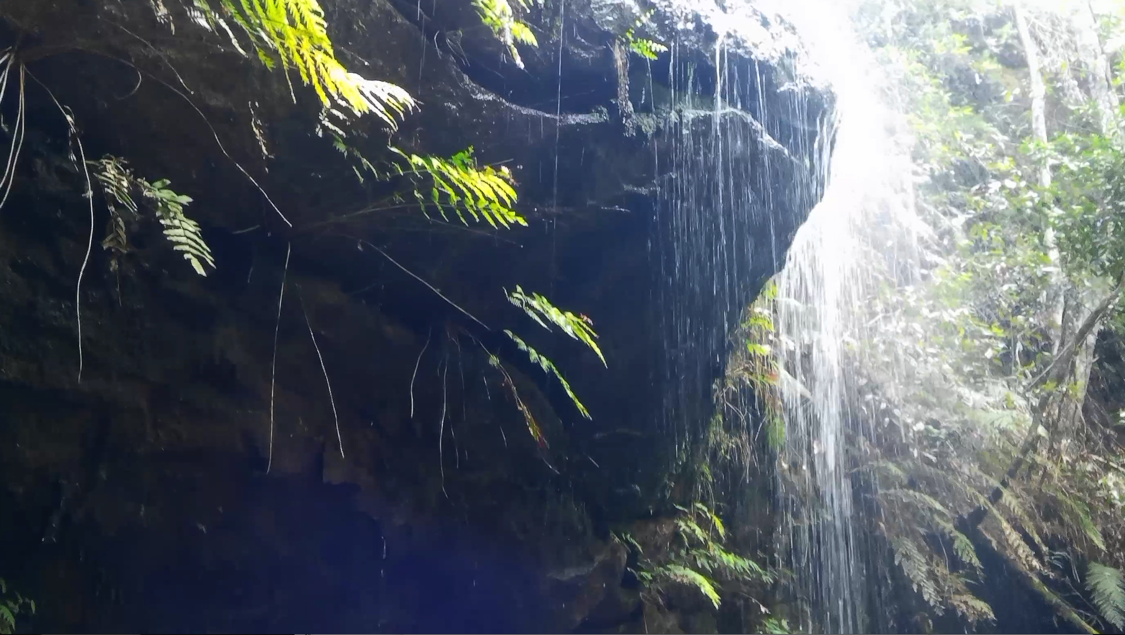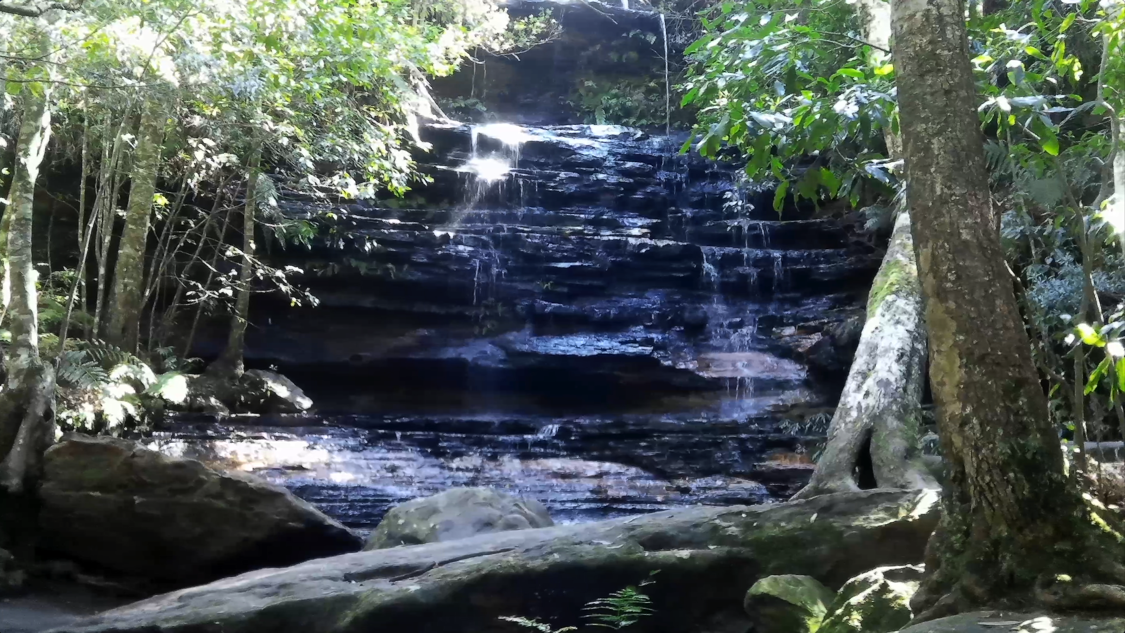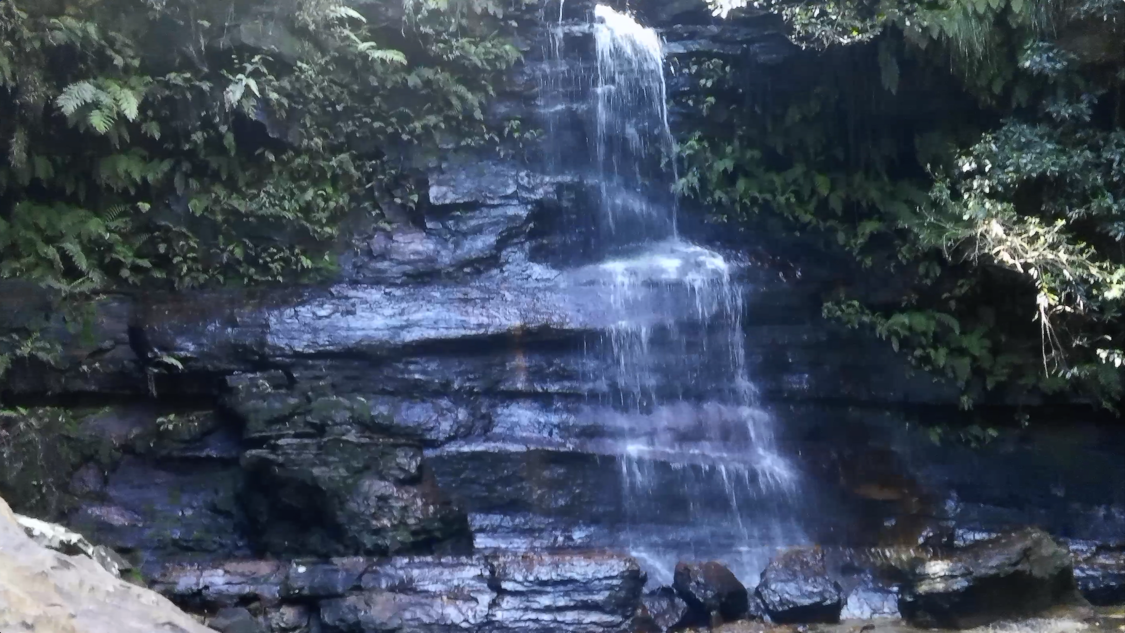The Blue Mountains Lookouts & Waterfalls
Episode 6
First Shown: 25 September, 2020 on YouTube
Adelina Falls, Junction Falls, Federal Falls & Cataract Falls
These four waterfalls are on the southern side of the Great Western Highway at Lawson, in New South Wales and are reached by walking the South Lawson Waterfall Circular Walking Track that eventually returns us to the tracks’ start. There are several intersections along this circuit walk, so directions can get a bit confusing. It’s a good idea to have a close look at the map at the start of the walk.
Adelina Falls As far back as 1880 the Adelina Falls were praised in the newspapers. Here is one description. "The Adelina Falls are not less than 70 feet (21m) in their unbroken descent, tumbling over a mass of dark shining rock into a scene of sylvan beauty. This water-formed chasm is fringed with masses of green brushwood and long reedy grass, well shaded everywhere by the white-trunked eucalyptus gum trees and several elegant coachwood trees. Near the base of the grand cascade there is a fine display of ferns with ferns and creepers overhanging the waterfall like waving tresses."
The sign at the start of the track reads Adeline Falls not Adelina as I have eluded to, earlier. My extensive research has uncovered that the waterfall was named after Adelaide Mary Wilson born in 1850 and the first girl born in Lawson. Her father Henry Wilson was licensee of the Blue Mountains Hotel in Lawson. She was called Adeline or Adelina by locals so I guess either name is correct. She died in 1898 at the age of 47.
Around 1875, the waterfall was called Livingstone Falls, after Doctor Livingston, the doctor missionary who explored many parts of Africa. This area of Lawson was, at that time, referred to as Santa Cruz Park, named by Mr José Gillermo Hay who owned all the land in this vicinity.
Junction Falls is found roughly 600m, down a side path, further down the track from Adelina Falls. Since the walk is a circular track, another way to walk to this fall is from Cataract Falls.
The fall was named Junction Falls because it is situated very close to the junction of Ridge Creek and Lawson Creek, that flow into Bedford Creek. Some say, the junction is below Junction Falls but until we get there, I cannot say for sure, whether that is the case. Let’s hope it’s above, then we will see considerably more water flowing over it, than Adelina Falls.
The fall was previously named Stanley Falls by José Gillermo Hay, in 1871. But some people called it Hay’s Cascades, after him obviously. However, in a January 1883 letter to the Editor of the Sydney Morning Herald Mr Hay replied to a published ‘Tourist Letter’. He wrote, “The various falls have not been altered, the Junction Falls have not been re-named Hay's Cascade, but they are known as Stanley Falls.” Mr Hay was a Reserves’ Trustee appointed on 16th January, 1880, and it was he who named two parks in Lawson, San José to the north and Santa Cruz to the south.
On the 22nd of October 1910 an article titled 'LAWSON BEAUTY SPOTS' appeared in the Nepean Times. It read, "Continuing the walk along the well-made track winding through a beautiful valley covered with ferns, for about a quarter of an hour, the visitors will find themselves at the Junction Falls, a romantic meeting of two falls in a deep, mossy sylvan glen that is one of the prettiest spots around Lawson."
An illicit still at the Junction Falls was mentioned in the 1910 Lithgow Mercury and Star Newspapers. They reported, "If one wants to do a little exploring, just climb up the bank on the right of the water, and endeavour to reach a ledge about three-fourths the height of the Fall, and you will discover the remains of an illicit still; it will test all one's skill in finding it." We, however did not find the still. If it was a relic in 1910 there does not appear to be any parts of it left, now. It has been 110 years.
Who was running this illicit still? In The Australian Star newspaper in May 1888, it states, "PENRITH, This day. — Mrs. Hay, wife of Joseph Hay, of Lawson, was fined £30 at the Police Court yesterday, for sly grog-selling. Notice of appeal was given." And the Nepean Times of May 1889, says, "Joseph Hay applied to the Penrith Licensing Court for a license for a hotel at Lawson." Circumstantial evidence? I think not.
Federal Falls This is a pleasant easy walk that leaves Lawson Creek and takes walkers up Cataract Creek to the falls. Another way to walk there starts further down Honour Avenue opposite house No.94 and via Cataract Falls.
In 1899 in anticipation of the Federation of Australia in 1901, these falls were renamed Federation Falls to commemorate the event. Before then, in 1882, the falls were known as Hays Cascades, after Joseph Guillermo (1848 to 1923) and Eliza Jane Hay (1847 to 1933), who, along with Joseph’s sister Mary held significant land in the area. It is plausible that Mr Hay named the fall after himself since as an early Trustee he named many of the parks, waterfalls and even streets, in Lawson.
Cataract Falls are on Cataract Creek, within South Lawson Park, about 600m upstream from Federal Falls, or about 250m from Honour Avenue. These falls consist of a series of small waterfalls falling into a pool at their base. If you choose to go to Cataract or Federal Falls first, just follow Honour Avenue another 550m from the Adelina Falls track entrance.
An item published in The Mountaineer in May of 1900 names the Falls ‘The Cataract’, and reads, "After a short walk this romantic spot is reached, but why it is described as romantic, one is at a loss to imagine. The scene is unique, weird and grand, and stands out as if proud of its grandeur. At flood time doubtless it has the appearance of a cataract. It is the head of a ravine — a spacious cavity without foliage, but its sloping sides bright with bracken, moss and rushes, with its unbroken stream running over the rock in placid grandeur."
Australian Town and Country Journal published on 19 November, 1898 states, "The track which commences at the termination of the road, passes by two rustic bridges over the waters which form the falls, and then winds down to the foot. The water comes slanting down in considerable volume; then follows a series of short, beautiful cascades; then a long slope; and then a sheer drop into the basin below."




